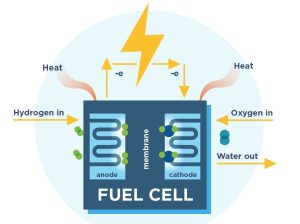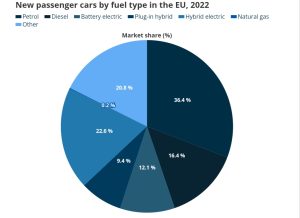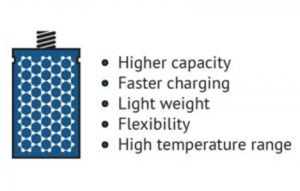Lithium batteries are all around us, but are they the best option? They are widely used, they can be found in our phones, tablets, laptops, digital cameras, ebikes, electric toothbrushes, children’s toys and even electric cars. There are many different types of batteries but here will be covered only the most used ones.
Lithium battery vs. lithium-ion battery
Lithium batteries are designed to be single use due to their primary cell construction whereas lithium ion batteries can be recharged to use many times and have secondary cell construction.
Alkaline vs. lithium batteries
Alkaline batteries are more popular but lithium batteries offer better performance due to the different chemicals being used to make the batteries.
Lithium batteries have a higher capacity than alkaline, a lower self-discharge and longer shelf life.
Lithium batteries are 33% lighter than alkaline because lithium is the lightest metal and lightest solid element under standard circumstances. It makes lithium batteries better for portable devices and alkaline batteries the better choice for corded items. And given that lithium batteries perform in extreme temperatures (as low as -40°C), it is ideal for outdoor use.
The long shelf life of a lithium battery makes it suitable for electronics and other home devices that have a complicated battery-changing process.
In table 1 are given different devices which use alkaline and lithium batteries.
| Alkaline AAA batteries | Lithium AAA batteries |
| Microphones | Digital cameras |
| Carbon monoxide detectors | Medical gadgets |
| Low-drain headlamps and other lighting devices | Radio communication devices |
| Toys | Surveillance systems |
| Clocks and remote controls | High-drain toys |
Lead-acid batteries vs. Lithium batteries
Lithium-ion and lead acid batteries can both store energy effectively, but each has unique advantages and drawbacks. The one category in which lead acid batteries seemingly outperform lithium-ion options is in their cost. A lead acid battery system may cost hundreds or thousands of dollars less than a similarly-sized lithium-ion setup. Lithium-ion battery technology has been well-proven to have a significantly higher energy density than lead acid batteries. This means that more energy can be stored in a lithium-ion battery using the same physical space.
Manufacturing downsides
Despite the advantages in usage, the manufacturing process brings some risks. The process of mining lithium is very toxic for the environment as it polllutes the atmosphere due to emission of fugitive particles, damages the soil and consumes a lot of fresh water.
Because of the raw materials, nickel, cobalt, lithium and manganese, which are used to produce the batteries, the price is relatively high because the demand for lithium has become higher than what’s available on the market.
Risks of usage
Batteries are sensitive to high temperatures and there is a chance of over-heating. They are highly flammable and can catch on fire or explode if not handled properly. This risk is especially high during the manufacturing process. Lithium batteries are not dangerous if stored under the right conditions — between -40°C to 50°C
Disposal drawbacks
Not only is the process of manufacturing of the batteries bad, but they are also toxic when disposed of.
Lithium batteries contain chemicals such as cobalt, nickel, and manganese which can contaminate the water and ecosystems.
The battery’s prime is 2 – 3 years after being manufactured. They can last up to 20 years but it’s no surprise for it to downgrade in performance with time.
Graphene batteries
In the field of batteries, conventional battery electrode materials (and prospective ones) are significantly improved when enhanced with graphene. A graphene battery can be light, durable and suitable for high capacity energy storage, as well as shorten charging times. It will extend the battery’s life, which is negatively linked to the amount of carbon that is coated on the material or added to electrodes to achieve conductivity, and graphene adds conductivity without requiring the amounts of carbon that are used in conventional batteries. Companies all over the world (including Samsung, Huawei, and others) are developing different types of graphene-enhanced batteries, some of which are now entering the market. The main applications are in electric vehicles and mobile devices.

Figure 1: Graphene enhanced battery
Now that we researched the most used battery types and focused deeper on the good and the bad sides of lithium batteries we can see that there are good reasons to use them but we should stay on the lookout for safer and more environmentally friendly options.
References:
https://www.graphene-info.com/graphene-batteries
Nina Cerovac



